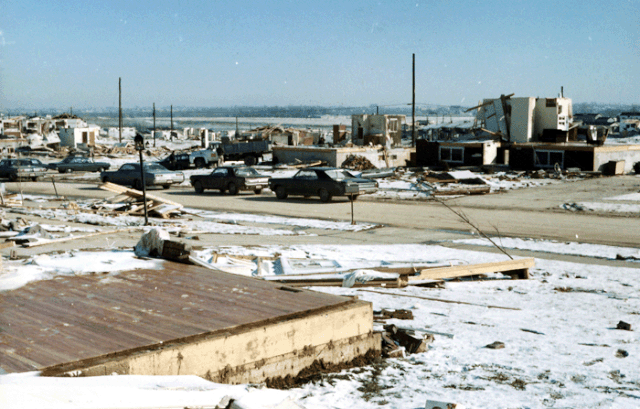









St. Louis is experiencing notable weather patterns in 2025, with increasing temperatures and erratic precipitation shaping the region's climate. This article delves into the implications of these trends for the local community, agriculture, and infrastructure.
Understanding St. Louis Weather: A Climate Overview
St. Louis, nestled at the confluence of the Mississippi and Missouri Rivers, is known for its diverse and often unpredictable weather. The region experiences a humid continental climate, with hot summers, cold winters, and significant seasonal variations. However, recent years have seen shifts in these patterns, prompting both residents and meteorologists to take notice.
- Temperature Trends: In 2025, average temperatures have risen, with summer highs frequently reaching the mid to upper 90s Fahrenheit. This trend aligns with national patterns indicating a warming climate.
- Precipitation Changes: Rainfall in St. Louis has become more erratic. While some months experience torrential downpours, others see prolonged dry spells, raising concerns about flooding and drought.
The Impact of Climate Change on St. Louis Weather
The effects of climate change are increasingly evident in St. Louis, with local meteorologists warning of its profound implications.
- Increased Frequency of Extreme Weather Events: The number of severe storms has risen, with thunderstorms becoming more intense, leading to flash flooding. The National Weather Service has issued multiple flood warnings in recent months.
- Heat Waves: The summer of 2025 has seen multiple heat advisories issued, with heat indexes soaring above 105°F. This raises health concerns, particularly for vulnerable populations.
Seasonal Analysis: What to Expect in 2025
Spring: A Season of Transition
- Unpredictable Weather: Spring has brought fluctuating temperatures and severe storms. Residents have reported sudden shifts from warm days to cold snaps, complicating agricultural planning.
- Flooding Risks: With increased rainfall, many areas have faced flooding, impacting local infrastructure and agriculture.
Summer: The Heat is On
- Record Temperatures: The summer forecast indicates continued above-average temperatures, pushing the limits of comfort and safety for residents.
- Drought Conditions: Despite the rain earlier in the year, there are concerns about soil moisture levels, affecting crop yields across the region.
Fall: A Shift in Patterns
- Milder Weather: Traditionally, fall offers a reprieve from the heat. However, forecasts suggest that warmer autumns may become the norm, altering the timing of foliage and impacting tourism.
- Hurricane Effects: As hurricanes become more intense in the Gulf of Mexico, St. Louis could see remnants leading to heavy rainfall and wind events.
Winter: Preparing for the Cold
- Warmer Winters: Early forecasts indicate that winters could be milder, yet with sporadic cold snaps, causing challenges for heating and energy demands.
- Snowfall Variability: While some years see heavy snowfalls, 2025 may trend toward less predictable snow patterns, complicating winter preparations for residents.
Agriculture: The Backbone of the Region
The agricultural sector in St. Louis is facing challenges due to changing weather patterns.
- Crop Yields: Farmers are adjusting planting schedules and crop choices in response to temperature changes and unpredictable precipitation.
- Water Management: With increasing drought risks, farmers are investing in water conservation techniques, adapting to ensure sustainability.
Infrastructure Challenges: Adapting to New Realities
With the increasing frequency of extreme weather, infrastructure in St. Louis is under strain.
- Flood Mitigation Efforts: City planners are focusing on improving drainage systems and flood defenses to manage the impacts of heavy rainfall.
- Heat Resilience: Urban heat islands are becoming a significant concern, prompting initiatives to increase green spaces and shade in urban areas.
Community Awareness and Preparedness
Local organizations are stepping up efforts to educate residents about the changing weather patterns.
- Emergency Preparedness: Programs are being developed to help communities prepare for severe weather events, including storm shelters and emergency kits.
- Public Health Initiatives: As heatwaves become more common, public health campaigns are promoting awareness of heat-related illnesses and how to avoid them.
Looking Ahead: The Future of St. Louis Weather
As we move further into 2025, the implications of the changing climate on St. Louis weather will continue to unfold.
- Research and Innovation: Local universities and research institutions are actively studying weather patterns, working to develop innovative solutions to combat the effects of climate change.
- Community Engagement: Increased community engagement and advocacy are crucial in addressing climate challenges, driving policy changes, and fostering resilience.
In summary, the weather in St. Louis during 2025 is characterized by rising temperatures, erratic precipitation, and an increased risk of extreme weather events. Understanding these changes is vital for residents, policymakers, and businesses alike, as they navigate the implications for health, agriculture, and infrastructure. As we continue to monitor these trends, proactive measures and community awareness will be key to adapting to the new climate realities.
